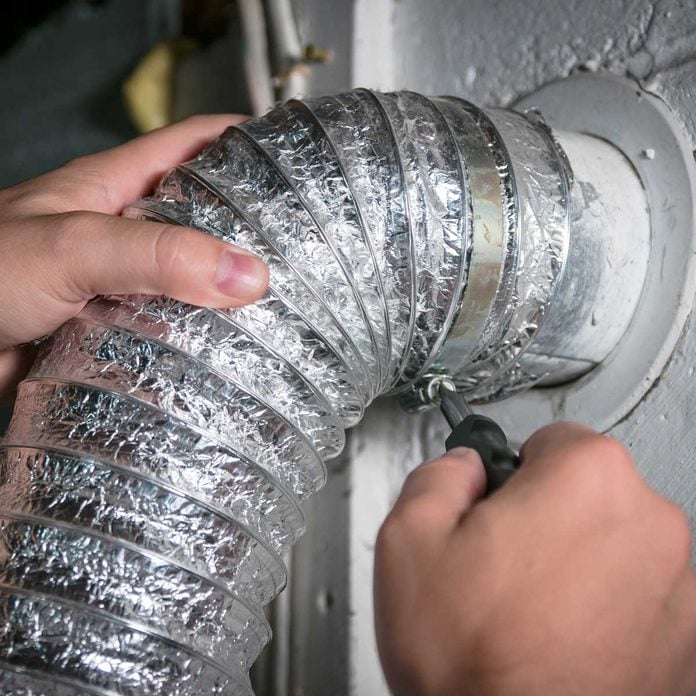Outdoor vs. Indoor Dryer Vents: What to Know
Updated: Sep. 28, 2023

When installing a dryer vent, which style should you choose? It depends on the type of machine and the location of your laundry room.
Our editors and experts handpick every product we feature. We may earn a commission from your purchases.
The first step in any home improvement project is determining which parts and tools you’ll need. When building your dream laundry room, a key task is installing a dryer vent. There are two styles — indoor dryer vents and outdoor dryer vents — that perform the same function in slightly different ways. Here’s what you need to know before heading to the store.
On This Page
What is an Indoor Dryer Vent?
Dryer vents remove excess heat generated during the dryer cycle in order to prevent fires. An indoor dryer vent is typically used in spaces without outer wall access. Instead of running through a wall or window, an indoor dryer vent blows into your laundry room, using a filtration system to capture rogue lint. Because the entire system is contained within the home, it is ideal for apartments and condominiums where external venting is impossible. Some indoor dryer vent models, such as Dundas Jafine’s ProFlex Kit, use water to trap lint from your dryer. Others, like the BetterVent Indoor Venting System, use disposable cloth filters. Both need to be cleaned and replaced regularly.
Indoor vs. Outdoor Dryer Vents
While indoor and outdoor vents protect the dryer from overheating, they are not interchangeable. Dundas Jafine, one of the leading providers of air distribution products, stresses that indoor dryer vents should only be used with electric dryers — never with gas. Exhaust from gas dryers must be vented outside because it contains carbon monoxide.
Outdoor dryer vents, on the other hand, are suitable for dryers with any power source. This style runs through an external wall, ending in a dryer vent cap outside of your home. The opening can be a primary entrance for mice and other unwanted roommates, so be sure to securely hook up your dryer vent and select a pest-preventing cap. When the times comes to clean your external dryer vent, you’ll need to go outside to access it.
Neither indoor nor outdoor dryer vents should be connected to plastic dryer ducting, to avoid a potential fire hazard.
Finding the Right Dryer Vent
To select the right vent model, consider your personal situation. Do you have an electric dryer? Are your washer and dryer stacked or side-by-side? Is there a sink in the vicinity? All of these things will help you figure out which style will work best for you.
If you have easy access to a sink, a water filtration system might be the best indoor dryer vent for you. Dundas Jafine recommends emptying and refilling the water reservoir after each load. The frequency may vary depending on the model, so always refer to your manufacturer’s instructions.
Nowhere to dump and replace water? Then an indoor dryer vent with disposable filters might be a better option. The BetterVent filter can be vacuumed multiple times before it needs to be changed. Remember to factor in the recurring cost of purchasing replacement filters.
Some of the best indoor dryer vents can be purchased as a kit with everything you need for installation. Look for a kit that allows dryer vent installation at eye level. The Dundas Jafine ProFlex Indoor Dryer Vent Kit is ideal because it comes with a plastic mounting ring and adjustable clamps, offering easy access for cleaning and repairs. The BetterVent also attaches to the wall and it includes two spare filters. Next, get to know about roof dryer vent.